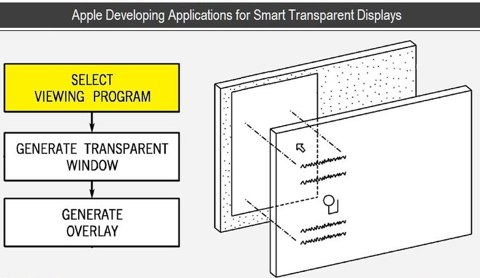Inginerii companiei Apple lucreaza din greu la dezvoltarea unei multitudini de tehnologii noi insa din pacate foarte putine dintre acestea ajung sa fie efectiv folosite in iDevice-uri. Astazi am pentru voi un brevet de inventie pentru ecrane transparente. Apple prezinta un sistem format din 2 display-uri, unul opac montat in partea din spate a dispozitivului si un altul transparent montat in fata celui opac. Ecranul din fata ar urma sa afiseze anumite imagini care insa vor fi suprapuse peste cele afisate de catre ecranul opac, asta daca aplicatia care ruleaza “cere” acest lucru.
Sometimes the right video could cut through some of the mental clutter associated with a new concept and make it come to life. One aspect of Apple’s new patent clearly describes the use of a sophisticated dual display system. In one scenario, the user will be able to actually view what’s directly behind the display while running another application in the forefront at the very same time.
Apple lucreaza la un nou tip de software numit Viewing Program care ar controla transparenta imaginilor afisate pe primul monitor. Practic Apple descrie o metoda prin care aplicatiile ar folosin Viewing Program-ul pentru a face transparent tot ecranul sau doar portiuni ale acestuia astfel incat imaginea ecranului secundar sa fie afisata doar in anumite parti ale ecranului. Ideea celor de la Apple este complicata si probabil nu o vom vedea prea curand in vreun iDevice lansat pe piata, dar oare are cineva nevoie de ecrane transparente?
Apple envisions the ability to offer total transparency if an application calls for that, but could also have the rear display appear opaque so that the device could function normally for reading and surfing without distraction of what’s playing out behind the device. As noted in patent FIG. 6, one of the keys to this system is this new “Viewing Program” which controls how Apple implements various views on each display. Apple’s patent doesn’t go into great detail about this application at this stage of development. According to Apple’s document, the viewing program may allow for a portion of the display to be selectively transparent while the remainder of the area of the display being opaque.






















